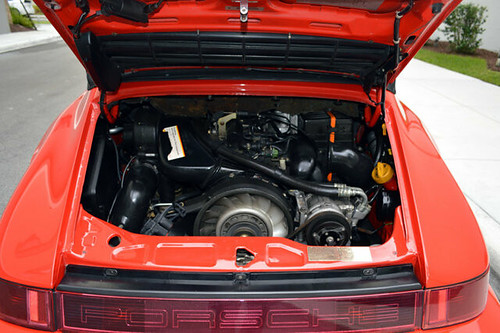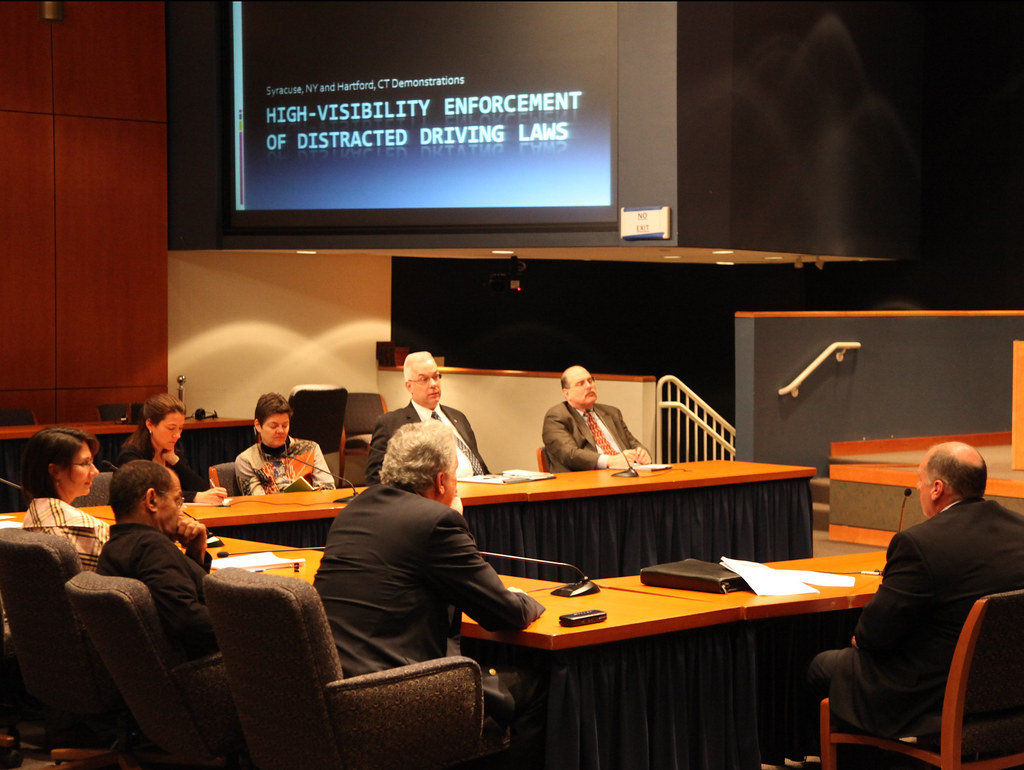
Nissan has announced a significant recall affecting nearly half a million vehicles across the United States and Canada, stemming from a manufacturing defect that poses a risk of catastrophic engine failure. This recall specifically targets models equipped with the company’s advanced VC-Turbo powertrains, including popular vehicles such as the Nissan Rogue, Altima, Infiniti QX50, and QX55. The issue, linked to defective main bearings and linkage components, could lead to reduced performance, engine knocking, and eventual loss of motive power, thereby increasing the risk of a crash.
The scale of this recall underscores the critical importance of vehicle safety and manufacturer accountability, particularly when innovative technologies are involved. Nissan filed a recall notice with the National Highway Traffic Safety Administration (NHTSA) in June 2025, initiating a process that will involve extensive dealer inspections and potential engine replacements for hundreds of thousands of owners. Understanding the specifics of this recall is paramount for owners of the affected models to ensure their safety and the longevity of their vehicles.
This in-depth article aims to provide a clear, factual overview of the Nissan VC-Turbo engine recall. We will detail the exact models impacted, explain the underlying technical flaw, highlight the critical warning signs vehicle owners should monitor, and discuss the immediate steps recommended by Nissan. Our goal is to equip you with the essential knowledge needed to navigate this situation, ensuring you remain informed about this important safety campaign.

1. Overview of the Massive Recall: Addressing a Critical Engine Failure Risk
Nissan is recalling 443,899 vehicles in the U.S. due to a significant manufacturing flaw that could result in engine failure. This extensive recall involves certain Nissan and Infiniti models, all equipped with the variable compression turbo (VC-Turbo) engines. An additional 37,837 vehicles in Canada are also affected by this issue, bringing the total to more than 480,000 units across North America. The seriousness of this defect is highlighted by Nissan’s statement that “the engine bearings may have manufacturing defects that can lead to engine failure,” which, in turn, can lead to “a loss of motive power and increase the risk of a crash.”
The recall notice, identified as NHTSA recall number 25V437, signals a comprehensive effort by Nissan to address a pervasive mechanical risk. This action follows a previous probe launched by the NHTSA in 2023 into allegations of turbo engine failure in popular Nissan cars and SUVs. The investigation confirmed complaints related to engine failure in models like the Nissan Rogue, indicating a persistent problem with the VC-Turbo engines despite Nissan’s earlier production changes aimed at correcting these issues.
For owners, this recall translates into a direct impact on their vehicle’s reliability and safety. Nissan has indicated that some vehicle owners could receive new engines as a direct consequence of this manufacturing flaw. This proactive measure aims to mitigate the risk of unexpected breakdowns and potential accidents arising from sudden engine power loss, reinforcing the urgency for affected vehicle owners to engage with the recall process promptly.
Read more about: Ford Issues Major Recall: Critical Power Brake Assist Loss Risk for 312,000+ Bronco, F-150, Expedition, Ranger, and Navigator Models

2. Specific Vehicles Impacted: Identifying Your Model and Model Year
The recall encompasses a specific range of Nissan and Infiniti vehicles, primarily from model years 2019 to 2024. These vehicles are all outfitted with either the 1.5-liter 3-cylinder or 2.0-liter 4-cylinder variable compression turbo engines, which are at the heart of the reported issues. Understanding if your particular vehicle falls within this recall is the first crucial step for any owner.
The breakdown of affected models and their respective units provides a clear picture of the recall’s scope. The Nissan Rogue, model years 2021-2024, constitutes the largest portion of the recall, with 348,554 vehicles affected. This makes the Rogue the most impacted of the four cars involved, emphasizing the widespread nature of the problem within this popular SUV line.
Beyond the Rogue, the recall also includes the 2019-2020 Nissan Altimas, with 5,685 units impacted. Infiniti luxury models are also part of this action, specifically the 2019-2022 Infiniti QX50s, affecting 84,536 vehicles, and the 2022 Infiniti QX55s, with 5,124 units. These figures illustrate the broad reach of the manufacturing defect across Nissan’s diverse lineup featuring the VC-Turbo engine technology.

3. The VC-Turbo Engine: Innovation Meets Challenge
At the core of this recall is Nissan’s revolutionary variable-compression (VC-Turbo) engine, a powertrain designed to dynamically adjust compression ratios in real time. This innovative engineering was intended to deliver an optimal balance of fuel economy and performance, representing a significant technological breakthrough in automotive design. The engine’s capability to toggle between different compression ratios was marketed as a feature providing both efficiency for cruising and power when needed.
The VC-Turbo engine first made its debut in the 2019 Infiniti QX50, subsequently appearing in the Nissan Altima and Rogue models. Its introduction marked a bold step for Nissan, showcasing a commitment to advanced engine technology. The complexity inherent in such an adaptive engine, however, may have inadvertently contributed to the “long-term durability concerns” now being addressed through this recall.
While the VC-Turbo engine was lauded for its technological prowess, the current recall highlights a critical vulnerability in its manufacturing. The issues stem from certain internal components failing prematurely, which suggests that the complexity and precision required for such an engine design faced challenges in mass production. This situation underscores the delicate balance between innovation and reliability in automotive engineering, particularly when cutting-edge technology is involved.

4. The Core Defect: Manufacturing Flaw in Engine Bearings and Linkage Components
The root cause of this widespread recall is attributed to potential manufacturing defects within the VC-Turbo engines themselves. Specifically, Nissan has identified that the “engine bearings may have manufacturing defects.” These main bearings and other internal components, such as the A-, C-, and L-links, are critical to the engine’s smooth and reliable operation.
The problem arises when these defective parts prematurely wear out. This wear can lead to the generation of metal debris, which then accumulates in the engine’s oil pan. The presence of such debris is a clear indicator of internal engine damage and represents an urgent mechanical risk. This metallic contamination can further exacerbate wear on other engine components, accelerating the degradation process.
Ultimately, these manufacturing defects can lead directly to engine failure. The integrity of the bearings is crucial for managing the forces within the engine, and any compromise in their quality can have cascading effects throughout the powertrain. Nissan’s recall notice directly links these defects to a “loss of motive power,” emphasizing the severe safety implications for drivers.

5. Signs Your Nissan Engine May Be Failing: Critical Warning Indicators
Owners of affected Nissan and Infiniti vehicles are strongly advised to be vigilant for specific warning signs that their VC-Turbo engine may be developing issues. The defect typically manifests gradually over time rather than causing an instantaneous breakdown, providing a window for owners to detect problems before catastrophic failure. Early detection can be crucial in preventing further damage and ensuring safety.
Key indicators that drivers should monitor include the illumination of the check engine light or other dashboard alerts. These electronic warnings are designed to signal abnormalities within the engine’s systems. Additionally, any “unusual engine noises” such as knocking or ticking sounds emanating from the engine compartment are significant red flags that demand immediate attention. Such noises often indicate excessive wear or damage to internal components.
Other critical signs of potential engine distress include “rough idling or reduced power,” which can manifest as the vehicle feeling sluggish or performing inconsistently. An “oil pressure warning” light is also a serious indicator, as adequate oil pressure is vital for engine lubrication and cooling. If any of these symptoms appear, Nissan urges owners to “immediately schedule a diagnostic with a Nissan-certified dealer” to address the potential defect.

6. The National Highway Traffic Safety Administration (NHTSA) Involvement
The current recall stems from a formal process initiated by Nissan with the National Highway Traffic Safety Administration (NHTSA). Nissan filed a recall notice with the NHTSA in June 2025, detailing the nature of the defect and the scope of the affected vehicles. This filing is a mandatory step in ensuring public safety and regulatory oversight for automotive manufacturers.
The NHTSA has been actively involved in monitoring these issues. Back in 2023, the agency launched a probe into allegations of turbo engine failure in various Nissan models. This investigation was prompted by numerous complaints from vehicle owners regarding engine issues linked to the VC-Turbo powertrains. The probe ultimately contributed to the current, expansive recall, highlighting the agency’s role in consumer protection.
The official NHTSA recall number for this specific issue is 25V437. This number serves as a crucial reference point for owners, dealers, and regulatory bodies to track and verify the recall information. The availability of this recall notice via the NHTSA.gov website, accessible using a vehicle’s VIN, empowers owners to independently verify their vehicle’s status and access official documentation related to the safety campaign.
Read more about: Massive Ford Recall Alert: Engine Failure Risk for Bronco, F-150, Explorer, and Lincoln models

7. Understanding the Risk: Potential for Catastrophic Failure and Related Incidents
The underlying manufacturing defects in the VC-Turbo engines carry a significant safety risk: the potential for catastrophic engine failure. Nissan’s official announcement on the NHTSA website explicitly states that a “failed engine can lead to a loss of motive power and increase the risk of a crash.” This makes the recall not merely a matter of vehicle performance but a critical safety concern that could have severe consequences on the road.
The integrity of the main bearings and linkage components is vital for the engine’s safe operation. When these parts wear prematurely, they introduce metal debris into the engine oil, creating an environment ripe for further mechanical breakdown. The gradual deterioration means that while sudden, instantaneous failure may not be the norm, the risk of a complete loss of power while driving can arise without adequate warning, especially if early signs are ignored.
It is also important to note that while recall documentation focuses on preventative measures, the context mentions broader concerns. Specifically, “Documentation for the recall failed to include 12 reports of related fires/crashes caused by the turbo engine, and 1,878 incidents.” While these were not officially *included* in the recall documentation, their mention underscores the potential for severe outcomes when these engine defects manifest, reinforcing the urgency for owners to address this recall.
Read more about: Ford’s Hybrid Fire Risk: An In-Depth Consumer Report on Escape, Corsair, and Maverick Recalls

8. Navigating the Multi-Step Dealer Inspection Process
Owners of affected Nissan and Infiniti vehicles are required to bring their cars to an authorized dealership for a thorough inspection. This initial step is critical for determining the specific remedy needed for each vehicle. Nissan has outlined a precise, multi-step process that service technicians will follow to assess the condition of the VC-Turbo engine.
The core of this inspection involves technicians removing and carefully examining the vehicle’s oil pan for any presence of metal debris. The discovery of such debris is a definitive indicator of internal engine damage, directly linking to the manufacturing flaw in the bearings and linkage components. This diagnostic procedure is paramount in identifying engines that have already begun to deteriorate due to the defect.
The inspection protocol varies slightly depending on the engine type. For vehicles equipped with the 1.5-liter 3-cylinder VC-Turbo engine, primarily found in the Nissan Rogue, technicians will inspect for metal debris in the oil pan. A similar debris check is performed for vehicles with the 2.0-liter 4-cylinder VC-Turbo engine, which includes the Altima, Infiniti QX50, and QX55 models.
Should metal debris be detected during this rigorous inspection, Nissan will proceed with either a repair or a full replacement of the engine. This action is taken at no charge to the owner, underscoring Nissan’s commitment to rectifying the manufacturing defect. If the oil pan is found to be clean, indicating no visible signs of metal contamination, alternative remedial actions will be implemented, which still provide critical maintenance and preventative measures.
Read more about: Unwavering Dedication: An Engineer’s Multi-Decade Quest to Restore His Dream 1979 Saab 96

9. Engine Repair and Replacement Protocols: What to Expect
For owners whose vehicles are found to have metal debris in the oil pan during the initial dealer inspection, the primary resolution involves engine repair or, more commonly, a complete engine replacement. This protocol is in place to address the root cause of the defect and prevent the catastrophic engine failure that the recall aims to mitigate. The decision between repair and replacement will be made by Nissan-certified technicians based on the extent of the damage observed.
Nissan has affirmed that if debris is found, an engine replacement will be provided at no charge to the vehicle owner. This is a significant aspect of the recall, as a new engine represents a substantial investment. For vehicles with the 1.5L VC-Turbo engine, as well as the 2.0L VC-Turbo engine, the presence of metal fragments in the oil pan triggers this critical corrective action, ensuring the vehicle’s long-term reliability and safety.
The replacement process aims to install an engine free from the identified manufacturing defects, thereby restoring the vehicle to its intended operational standards. Nissan will determine the exact number of engines to be replaced following these comprehensive inspections by service technicians. This measure directly addresses the concern that “the engine bearings may have manufacturing defects that can lead to engine failure,” providing a definitive solution for affected vehicles.
Read more about: Decoding the Lexus RX Engine: A MotorTrend Analysis of Lifespan, Common Issues, and the Intricacies of Replacement

10. Additional Remedial Actions for Vehicles Without Debris
Not all vehicles undergoing inspection will exhibit metal debris in the oil pan, which is a positive sign indicating the defect may not yet have progressed to internal damage. However, even in these instances, Nissan is implementing preventative and maintenance-oriented remedial actions to address potential latent issues and ensure vehicle longevity. These actions are also provided free of charge to the owner.
For vehicles equipped with the 1.5-liter 3-cylinder VC-Turbo engine, typically found in the Nissan Rogue, a specific set of procedures will be performed if no metal debris is detected. This includes replacing the engine oil, installing a new oil pan gasket, and reprogramming the engine control module (ECU). These steps are designed to refresh critical fluids and components while updating the engine’s operational software, potentially enhancing its durability and performance.
Owners of vehicles with the 2.0-liter 4-cylinder VC-Turbo engine, such as the Altima, Infiniti QX50, and QX55 models, will experience a simpler but equally important remedy if no debris is found. For these models, dealers will replace the engine oil only. While less extensive than the 1.5L engine protocol, this oil change is a fundamental maintenance step, ensuring optimal lubrication and removal of any microscopic contaminants not visible as larger debris.
These additional remedial actions underscore Nissan’s comprehensive approach to the recall. They demonstrate an effort to address vehicles across the spectrum of defect manifestation, from those with clear internal damage requiring engine replacement to those needing preventative maintenance and software updates to mitigate future risks, all without cost to the consumer.
Read more about: Why Your Parking Spot Matters: 14 Hidden Dangers to Your Car and the Environment

11. *xtended Powertrain Warranty: Assurance for Owners
Beyond immediate inspections and repairs, Nissan is offering an extended powertrain warranty to owners of affected vehicles, regardless of whether metal debris was found during the initial inspection. This provides a significant layer of long-term assurance and peace of mind for those impacted by the VC-Turbo engine recall. It is an acknowledgement of the inherent “long-term durability concerns” associated with the innovative, yet complex, engine design.
The extended powertrain warranty covers affected units for a duration of 10 years or 120,000 miles, whichever comes first. This goes beyond the standard warranty period and offers extensive coverage for critical engine and transmission components. This commitment by Nissan aims to alleviate concerns about future engine-related issues that might arise even after the recall service has been performed.
The provision of this extended warranty can also be a crucial factor for vehicle resale value. For many owners, having this documented assurance can boost confidence when trading in or selling their vehicle. It serves as tangible proof that Nissan stands behind its products and has taken proactive measures to address known defects, potentially mitigating the negative impact of a recall on the vehicle’s market perception.
This warranty extension reinforces Nissan’s dedication to customer satisfaction and safety, providing a safety net against unforeseen future mechanical problems related to the VC-Turbo engine’s complex architecture. It represents a long-term commitment to owners, ensuring that potential issues are covered well into the vehicle’s operational life.
Read more about: Protecting Your Purchase: A Consumer Report on Top Car Warranties and Key Manufacturer Recall Trends

12. Key Notification Dates and Owner Communication
Transparency and timely communication are critical components of any major recall, and Nissan has established specific dates for notifying both its dealership network and vehicle owners. These notifications are essential to initiate the recall process and ensure that all affected parties are aware of the necessary steps they must take. The staggered approach allows dealerships to prepare for the influx of vehicles requiring inspection and service.
Nissan officially commenced notifying its dealerships about the recall on July 15, 2025. This initial notification provided dealers with detailed information regarding the manufacturing flaw, the scope of affected models, and the established protocols for inspection, repair, and replacement. This advance notice enables service centers to staff appropriately, order necessary parts, and train technicians on the specific procedures involved in addressing the VC-Turbo engine defect.
Vehicle owners of the affected Nissan and Infiniti models will begin receiving official notification letters starting August 25, 2025. These letters will contain crucial information regarding their vehicle’s eligibility for the recall, details about the manufacturing defect, the potential risks, and instructions on how to schedule an inspection with a certified Nissan or Infiniti dealer. Owners are advised to carefully review these letters upon receipt.
In addition to the mailed letters, owners with immediate questions or concerns can directly contact Nissan’s customer service line at 800-647-7261 or Infiniti’s customer service line at 1-800-662-6200. These channels provide direct access to information and support, facilitating a smoother recall experience for vehicle owners. The NHTSA recall number, 25V437, serves as a universal reference for this safety campaign.
Read more about: The Billionaire Blueprint: 14 Shocking Daily Routines of Tech Titans and Top CEOs That Fuel Their Success

13. Reimbursement for Prior Repairs and Checking Recall Status
For vehicle owners who may have already experienced engine issues related to the VC-Turbo defect and incurred out-of-pocket expenses for repairs, Nissan has put in place a reimbursement plan. This ensures that customers are not financially penalized for a manufacturing flaw that predates the official recall announcement. Eligibility for reimbursement depends on whether the vehicle falls within the specified affected VIN range and if proof of payment for the repair can be provided.
If an owner previously paid for a failed VC-Turbo engine repair that is now covered by this recall, Nissan will provide reimbursement. The specific details and procedures for submitting a reimbursement claim will be made available through authorized Nissan and Infiniti dealers. Owners who believe they are eligible should gather all relevant documentation, including repair invoices and proof of payment, before contacting their dealership.
Verifying a vehicle’s recall status is a critical step for both current owners and potential buyers of used Nissan and Infiniti models. The most reliable method is to perform a free Nissan recall check by VIN (Vehicle Identification Number). This unique 17-character code, typically found on the driver’s side dashboard or door jamb, contains all the necessary details to confirm recall eligibility and determine if the specific vehicle is part of the campaign.
Owners can also visit the National Highway Traffic Safety Administration (NHTSA) website at NHTSA.gov and enter their VIN to access official recall notices and confirm their vehicle’s status. This online tool provides a direct link to regulatory documentation and serves as an independent verification source. Regularly checking a vehicle’s VIN for active recalls is a prudent measure to uncover hidden safety risks and ensure full compliance with manufacturer safety campaigns, protecting against unexpected breakdowns and significant repair costs.
Read more about: Global Ford Recall Alert: Essential Guide to Rearview Camera Failures Impacting Millions of Mustang, F-150, and Super Duty Models
This extensive recall underscores the importance of vigilant vehicle maintenance and prompt attention to manufacturer safety campaigns. Nissan’s comprehensive response, encompassing free inspections, engine replacements, extended warranties, and reimbursement policies, reflects a significant effort to address this critical manufacturing defect. Owners of affected vehicles are strongly encouraged to utilize the provided resources and engage with their dealerships to ensure their vehicles receive the necessary repairs and updates, thereby enhancing safety and restoring confidence in their Nissan or Infiniti vehicle.



